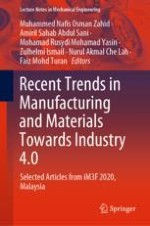2021 | OriginalPaper | Buchkapitel
Seawater as New Renewable Energy Resource: Material Characterization of the Cell Electrodes
verfasst von : Mohamad Azizi Shadan, Nur Safwati Mohd Nor, Mohd Zarhamdy Md. Zain, Fazila Mohd Zawawi, Nor Hasrul Akhmal Ngadiman, Norazlianie Sazali, Nor Akmal Fadil
Erschienen in: Recent Trends in Manufacturing and Materials Towards Industry 4.0
Verlag: Springer Singapore
Aktivieren Sie unsere intelligente Suche, um passende Fachinhalte oder Patente zu finden.
Wählen Sie Textabschnitte aus um mit Künstlicher Intelligenz passenden Patente zu finden. powered by
Markieren Sie Textabschnitte, um KI-gestützt weitere passende Inhalte zu finden. powered by
